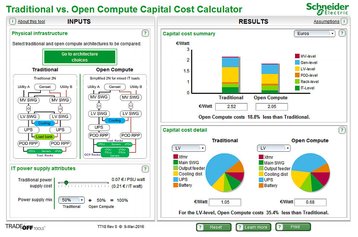Schneider Electric has been saving a few announcements for the Open Compute US 2016 Summit. Apart from showcasing an Open Compute Project (OCP) compliant rack, the company has produced concept designs for a high density, high efficiency power supply unit (PSU) and battery backup unit (BBU).
The rack complies with Open Rack V2 specifications which are based on Facebook’s designs. The racks can be supplied pre-assembled but they are also available as self-assemble flat-packs. As a pack, the racks take up around a third of the space of an assembled unit which makes them more economical to transport and reduces storage space requirements.
The cost of being open
The company has also been sharing reference designs for future OCP racks, power supply and battery backup units. These hardware specifications were accompanied by plans for a complete power and cooling infrastructure stretching from the utility to the server.
Schneider has also added to its library of whitepapers with an analysis of OCP-compliant datacenter architectures from a power supply perspective. The company said the focus has been concentrated on rack-level implications and felt it was time to look at the upstream power infrastructure – including the use of lithium ion batteries.
The paper addresses critical questions about power redundancy, availability and flexibility. As part of this, simplified OCP reference designs are given and there is a CapEx analysis of traditional architectures compared with OCP-based designs. This is backed up with an online TradeOff Tool to allow decision makers to use their own data to give themselves a better understanding of the cost differences and drivers of various architectures.
Kevin Brown, Schneider Electric’s vice president for global data center strategy and technology, said, “Schneider Electric’s new solutions, along with our reference design, underscore our commitment to supporting Open Compute-style architectures and making Open Compute more achievable for customers. By arming datacenter managers with an end-to-end Open Compute datacenter architecture, including the physical and IT infrastructure, we can help them better visualize their final design.”

